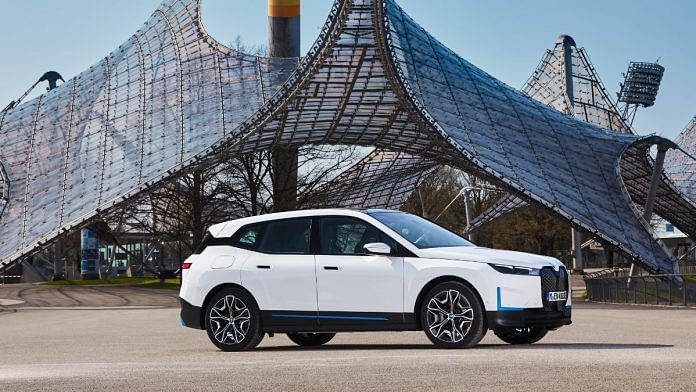I was pottering down central Delhi recently after a pleasant dinner with my wife when the BMW iX I was driving suddenly braked just as I approached one of the many roundabouts in the heart of the capital. This brings up several things, starting with the concept of ‘Right Of Way’, which is alien to most Indians, to the issue of collision avoidance systems that are increasingly featuring on cars.
Of course, my wife gave me a shellacking for braking so hard. Automatic braking is always very severe and my (really genuine) excuse that it was the car that braked, didn’t cut the mustard with her. Honestly, the vehicle was never at much risk of collision. But because the default setting on the BMW was for an ‘early’ avoidance, the car braked very early. Far too early for the situation to be honest. I pulled over and went through the menu and changed the settings to brake later for collision avoidance.
Drivers who have been taken with surprise by the automatic braking system often switch it off. But this becomes a driver training issue.
What I find interesting is that many people who buy cars with such features do not drive it themselves, and honestly as collision avoidance and other Advanced Driver Assistance Systems (ADAS) features come onto affordable cars, drivers ought to be trained in such systems. Level 2 systems, which warn drivers of vehicles in their blind spot, are already fitted onto higher-end variants of the Hyundai Verna, Kia Seltos and MG Hector. Cars like the Honda City and Hyundai Venue have camera-based systems for collision avoidance and lane-keeping assist.
It took me some time to get used to ADAS features and I’ve learnt to live with them. In fact, I even find features like the blind-spot warning extremely useful.
As it is, driver training in this country is very poor, but luxury brands and even the likes of Honda and Hyundai would do well to run courses to teach car owners and drivers on ADAS, how to switch it off and its usefulness. We have done videos at ThePrint explaining how these systems work and how to use them. Because switching these systems off is pointless, so I keep them at a reduced level of sensitivity. Believe me when a pedestrian in a dark jacket crosses a poorly-lit road at night, not an uncommon sight in Delhi winters, or when you encounter a black bovine in the middle of the night, collision avoidance systems are really handy in preventing an accident.
Also read: Kia proved a new carmaker can come to India & succeed. But Tesla can’t — yet
The controls
Back to the BMW iX, India’s best-selling luxury electric vehicle that has been given a slight refresh is really nice to drive. But what I liked about this car the most was the layout and the controls. Car controls have become very complicated these days. And while there are those who like busy layouts, like there are people who watch news channels with twelve people screaming all at one, I like simplicity. But not at the cost of functionality. Somehow this car manages that.
It is fairly unique for a BMW as well. A few months ago when I drove the new i7, the electric variant of the 7-series uber-luxury sedan, the cockpit and passenger seat felt like being at the controls of a spaceship. It felt like you needed a diploma on how to drive the car and operate its various features. The BMW iX proves that a lack of complexity in layout does not mean a loss of functionality because you have everything you need. I’m not a fan of the term ‘functional minimalism’ because it feels like it was thought up by a recently minted marketing graduate. But that is what the BMW iX really is.
That is even evident on the digital instrument cluster, where you have multiple layout options but they give you the information clean and easy. That’s also true on the heads-up display where if you try and control the media through Apple CarPlay, you not only get to see the album art but just how long the song you’re listening to has played. Never thought I needed such a feature, but it is really useful, if you, like me, listen to epic lengthy classic rock tracks from the likes of Led Zepplin.
This simple design language is visible on the outside as well. Nothing complicated. Everything is where it should be; there are no unnecessary garnishes. And I hope BMW themselves, and other carmakers, take this design philosophy with the interiors and exteriors further.
Also read: Odd-even rule & EVs are Swiss cheese in combatting pollution. Hybrid vehicles are key
The drive
It is a BMW, so ‘very nice’ is an apt adjective. The iX 40 as sold in India has a 72 kilowatt-hour battery. And in my driving, which included a few runs to Gurugram and around town, it returned an energy efficiency slightly over 5 km per unit, so a real-world range of around 350-380 km can be expected. I did charge the car at home once with my 11kW AC charger but the iX in its latest avatar can also accept 22kW AC and 195kW DC fast charging that will get the car from almost charge to 80 per cent in around 20 minutes. There are some luxury car dealerships, including for BMW in major metropolitan areas in India, that have such high-speed DC chargers. But these are few and far between.
Given that such cars are primarily used in the city, the range is more than adequate. Personally, I find this vehicle to be far more practical compared to the BMW X5, which costs more or less the same on-road thanks to lower taxes on electric vehicles. The iX feels like a winner to me.
@kushanmitra is an automotive journalist based in New Delhi. Views are personal.
(Edited by Anurag Chaubey)



